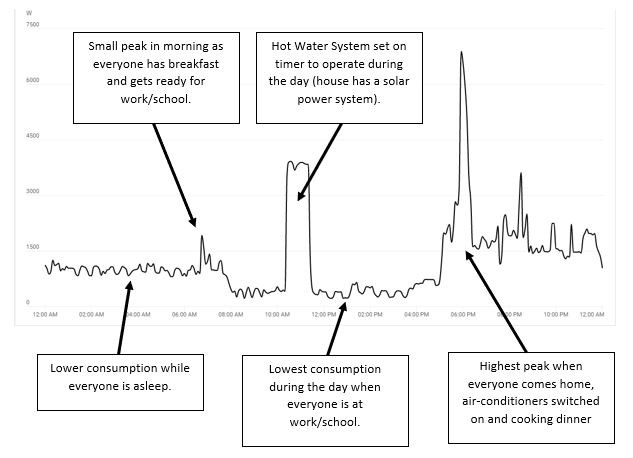Understanding how you use and pay for electricity is essential if you want to reduce your energy costs.
HOW WE USE ELECTRICITY
I’m splitting this article in two as there is quite a bit to cover. Let’s start with understanding how you use electricity (which I understand will confuse some people – surely we all use electricity the same way, you switch something on and it uses electricity, right?). What we mean here is how much do you use during the day compared to night-time? Do you use a lot spread out over a long time or a little all at once? And do you use it consistently every day, or does it vary from week days to weekends or at different times of the year?
Understanding how you use and pay for electricity is essential if you want to reduce your energy costs. It allows you to choose the most effective means of reducing it. For example, if you understand your night vs day usage you can install an appropriately sized solar power system that will provide the best possible return on investment. Failing to understand how you use electricity may lead to installing a solar system that is too small, reducing its cost saving potential, or too big, which extends the payback period.
To understand energy use there are a couple of terms and concepts that you need to get your head around:
DEMAND
Demand is the amount of electricity required to power a site/device at a single point in time. For example, the power required from the grid to make all the lights, computers, air-conditioners, fridges and kettles work in an office. It is constantly changing as appliances are switched on and off, and as fridges and air-conditioners cycle. Demand is measured in Kilowatts (kW).
CONSUMPTION
Consumption is the amount of electricity used over a period of time and is measured in Kilowatt Hours (kWh). It is calculated by the formulae: Kilowatts (kW) x Hours (h) = kilowatt Hours (kWh). For example, if an electric doosbry has a demand of 1kW (ie it needs to draw 1kW of power from the grid to work) and operates for 1 hour, its consumption is 1 kWh.
At Tropical Energy Solutions we provide Energy Efficiency Training to commercial and government agencies. It’s usually at about this stage of explaining Demand and Consumption that people’s eyes glaze over, a line of drool becomes noticeable from one corner of their mouth and their ears start to bleed. You need to stay with us here though. Once you understand Demand and Consumption everything else is easy.
You can think of Demand and Consumption as being a bit the same as filling up a swimming pool with a hose. Demand in this analogy is the amount of water coming out of the hose. It can be more or less depending on how big the hose is and how much you turn on the nozzle. It can also change as needed (eg as much as possible when you are filling the pool down to zero when you go to lunch). Consumption in this analogy is the water in the pool. Regardless of the demand of the hose, the consumption keeps getting higher.
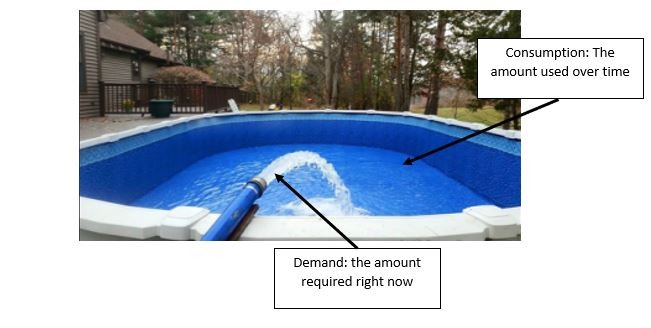
Bringing the water analogy back to electricity use, the following graph shows how a house may use electricity over a 24 hour period This is a house in Townsville, in summer, with air-conditioner use at night and family at work/school during the day:
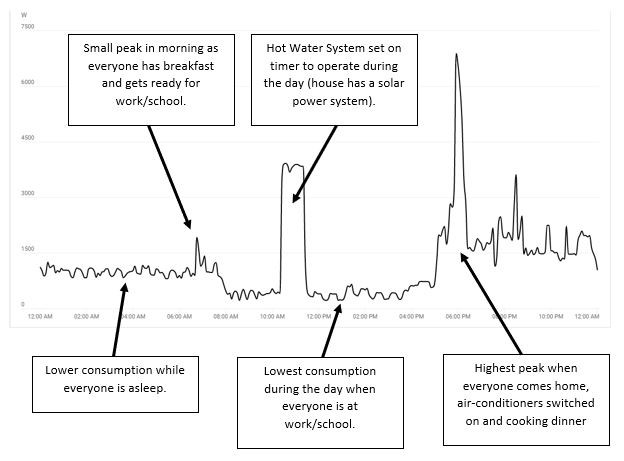
Compare this to how a commercial office that operates during normal business hours may use electricity:
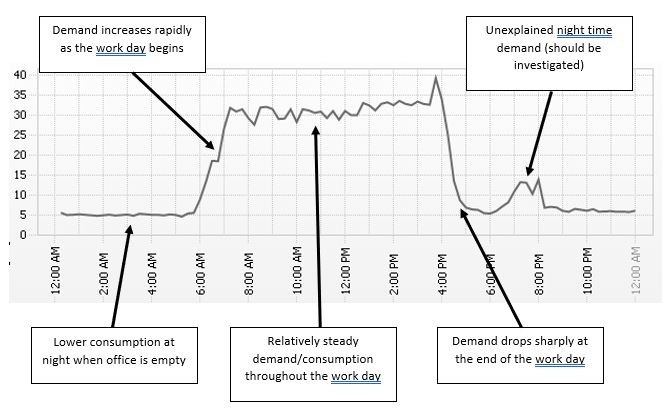
Or an industrial site…
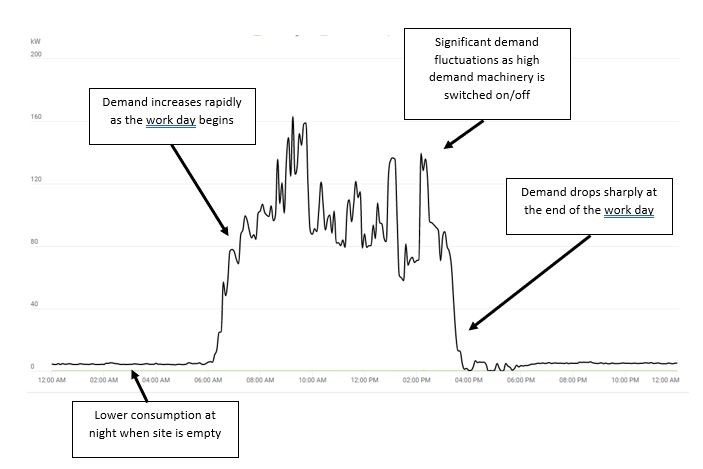
… and you can begin to understand that we all use electricity differently. This is why there is no “one size fits all” solution to reducing electricity costs.
SO, WHAT’S THE ANSWER?
Pretty much the same as to most questions regarding energy use, generation and cost. You need to look at the site specific circumstances of your home or business. Once you understand how you are using electricity you can do something about it.
For more information on how we can help you and your organisation better understand how you use electricity and reduce costs, contact us Ph: (07) 4772 7394, E-mail: mark@tropicalenergysolutions.com.au
To find out more about Energy Auditing click here
To find out more about Renewable Energy Feasibility Studies click here
To find out more about Energy Efficiency Training click here
To find out more about our Technical Consulting Services click here
